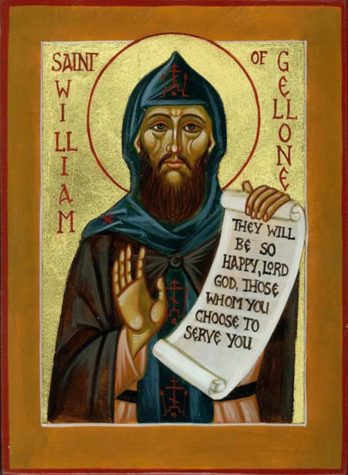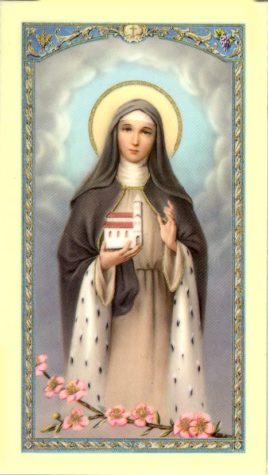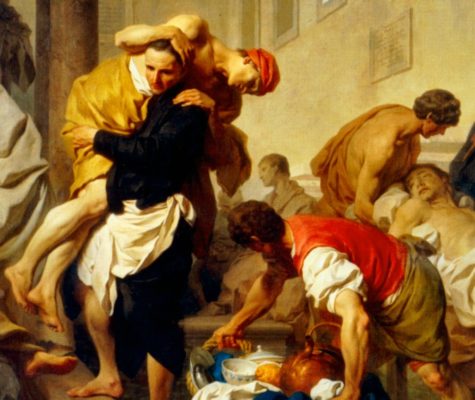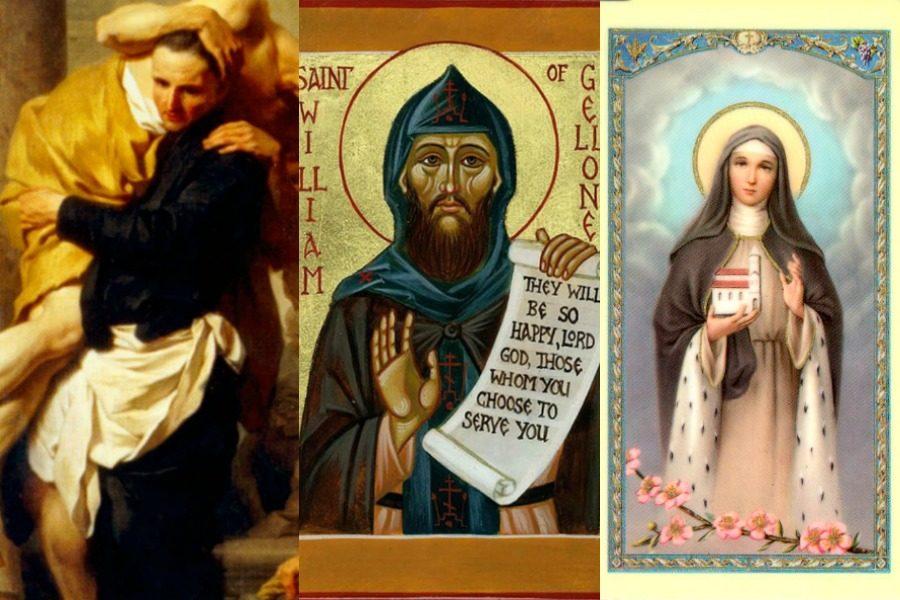From left to right, St. Camillus de Lellis, St. William of Gellone, St. Hedwig of Silesia
Lives of the Lesser-Known Saints: Part I
This is part one of a series on lesser-known Saints.
St. William of Gellone

Saint William of Gellone was born in 755 A.D. to Thierry, count of Toulouse. Throughout his life, he served in the court of his cousin, Charlemagne, who later made him duke of Aquitaine as well as count of Toulouse. Saint William fought on many campaigns against the Muslims who were making incursions into Frankish territory in northern Spain. He was considered an example of what a Christian knight should be. In 804, he founded a Benedictine monastery at Gellone and two years later, in 806, he retired there and became a monk and, later, the abbot of the monastery. Saint William died there May 18 in 812 and was canonized in 1066.
St. Hedwig

Saint Hedwig was the daughter of Count Berthold of Andechs, in Bavaria, where she was born. She was born in the year 1174, was one of eight children. When she was twelve, she was married to Henry, the duke of Silesia. Together they had seven children and built many monasteries, hospitals, and convents, including a Cistercian convent at Trebnitz, Silesia, in 1202. Saint Hedwig was widely regarded as a peacemaker, especially after Duke Henry won a war. Duke Henry was surprised and captured by his defeated opponent while inside a church. Saint Hedwig immediately went to her husband’s side, and, simply by being there, changed the mind of Henry’s captor. When Duke Henry died in 1238, Saint Hedwig retired to the Cistercian convent she had founded at Trebnitz, though she did not take the vows so she could continue to give her riches to the poor. She died at the convent on October 15, 1243 and was canonized in 1267. She is the patron saint of Silesia.
St. Camillus de Lellis

Saint Camillus was born in Bocchianico, Italy, in 1550. As a young man, he joined the Venetian army in their war against the Turks. He was addicted to gambling and eventually wound up bankrupt in Naples in 1574, where he worked in construction for Capuchin monks. He became a Capuchin novice, but he was forbidden from continuing because of a diseased and injured leg, something he had gotten from fighting the Turks. St. Philip Neri, Saint Camillus’ confessor, encouraged him to become a priest. St. Camillus then founded his own religious order, The Ministers of the Sick, or the Camillians, who, like him, were dedicated to serving the sick and dying. The Camillians served the sick wherever they were, including the plague victims on the ships in Rome’s harbor and the wounded on the battlefields in Hungary and Croatia, thus becoming the first battlefield medics. The Camillians were approved by Pope Gregory XIV in 1591. Saint Camillus was the Camillian’s superior until he resigned 1607. He later died in Rome on July 14, 1619, and was canonized in 1746. He is the patron saint of the sick.

